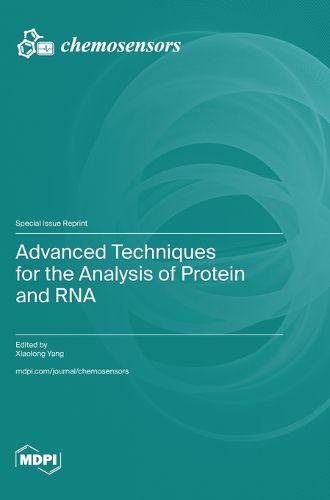Readings Newsletter
Become a Readings Member to make your shopping experience even easier.
Sign in or sign up for free!
You’re not far away from qualifying for FREE standard shipping within Australia
You’ve qualified for FREE standard shipping within Australia
The cart is loading…






This title is printed to order. This book may have been self-published. If so, we cannot guarantee the quality of the content. In the main most books will have gone through the editing process however some may not. We therefore suggest that you be aware of this before ordering this book. If in doubt check either the author or publisher’s details as we are unable to accept any returns unless they are faulty. Please contact us if you have any questions.
Proteins and RNAs are vital components of cellular machinery, playing diverse roles from structural functions to regulating signaling pathways and cellular processes. Their involvement is especially critical during development and in response to environmental stimuli, influencing growth, differentiation, immune responses, and other key biological activities. Enhancing the detection of proteins and RNAs, including mRNA and microRNA, is crucial for deepening our understanding of cellular dynamics and their roles in health and disease. Recent advancements in analytical techniques, such as mass spectrometry, immunoassays, and biosensors, have significantly expanded our knowledge of protein and RNA functions and interactions. These technologies are revolutionizing healthcare and environmental science by enabling precise diagnosis, monitoring, and treatment of various diseases, thereby improving global quality of life. In the Special Issue of Chemosensors titled "Advanced Techniques for the Analysis of Proteins and RNAs," nine studies showcase cutting-edge methodologies in biosensing, enzymatic assays, chromatography, and colorimetric and fluorescent assays. Highlights include the development of a HiBiT biosensor for YAP/TAZ proteins in cancer research, an impedimetric biosensor for biomarker detection, peptide-based assays for protein quantification, and chromatographic sensors for assessing food freshness. These studies collectively advance the field of protein and RNA analysis, offering valuable insights and methodologies poised to drive further research and innovation.
$9.00 standard shipping within Australia
FREE standard shipping within Australia for orders over $100.00
Express & International shipping calculated at checkout
This title is printed to order. This book may have been self-published. If so, we cannot guarantee the quality of the content. In the main most books will have gone through the editing process however some may not. We therefore suggest that you be aware of this before ordering this book. If in doubt check either the author or publisher’s details as we are unable to accept any returns unless they are faulty. Please contact us if you have any questions.
Proteins and RNAs are vital components of cellular machinery, playing diverse roles from structural functions to regulating signaling pathways and cellular processes. Their involvement is especially critical during development and in response to environmental stimuli, influencing growth, differentiation, immune responses, and other key biological activities. Enhancing the detection of proteins and RNAs, including mRNA and microRNA, is crucial for deepening our understanding of cellular dynamics and their roles in health and disease. Recent advancements in analytical techniques, such as mass spectrometry, immunoassays, and biosensors, have significantly expanded our knowledge of protein and RNA functions and interactions. These technologies are revolutionizing healthcare and environmental science by enabling precise diagnosis, monitoring, and treatment of various diseases, thereby improving global quality of life. In the Special Issue of Chemosensors titled "Advanced Techniques for the Analysis of Proteins and RNAs," nine studies showcase cutting-edge methodologies in biosensing, enzymatic assays, chromatography, and colorimetric and fluorescent assays. Highlights include the development of a HiBiT biosensor for YAP/TAZ proteins in cancer research, an impedimetric biosensor for biomarker detection, peptide-based assays for protein quantification, and chromatographic sensors for assessing food freshness. These studies collectively advance the field of protein and RNA analysis, offering valuable insights and methodologies poised to drive further research and innovation.